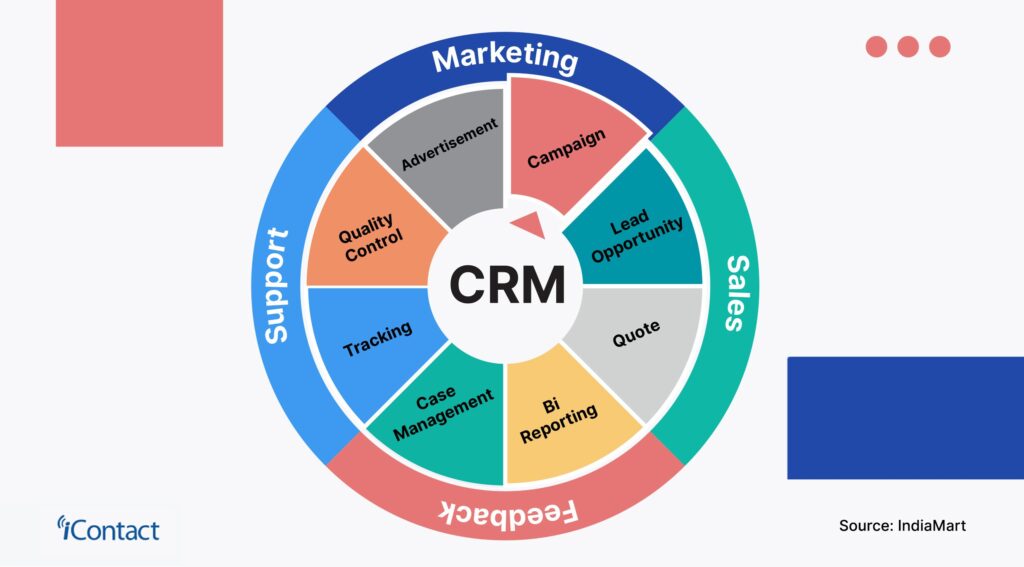
The Evolution of CRM: From Rolodex to AI
Customer Relationship Management (CRM) has undergone a remarkable transformation over the past few decades. What started as simple methods to manage customer information has evolved into sophisticated systems powered by artificial intelligence (AI). This article explores the fascinating journey of CRM from its humble beginnings with the Rolodex to the advanced AI-driven solutions of today.
The Rolodex Era: The Origins of CRM
In the mid-20th century, businesses relied on paper-based methods to manage customer information. The Rolodex, a rotating file device used to store business contact information, became an iconic symbol of this era. It allowed salespeople and business owners to organize and access customer contacts easily. While it was a significant step forward, it had limitations:
- Manual Entry: Information had to be manually recorded and updated.
- Limited Accessibility: Only one person could use it at a time, and physical access was required.
- Data Loss Risk: Information could be lost or damaged easily.
Despite these limitations, the Rolodex laid the groundwork for more advanced customer management systems.
The Digital Revolution: The Emergence of Software-Based CRM
The 1980s and 1990s saw the advent of computer technology, which revolutionized customer data management. Businesses began to use database management systems (DBMS) to store and organize customer information digitally. This era marked the birth of the first software-based CRM systems.
- Contact Management Software: Early CRM software focused on contact management, allowing businesses to store and retrieve customer information more efficiently than paper-based methods.
- Sales Force Automation (SFA): In the late 1980s, SFA tools were introduced to automate sales processes, track customer interactions, and manage sales pipelines. This significantly improved sales productivity and efficiency.
- Customer Service and Support: By the 1990s, CRM systems began to incorporate customer service and support functionalities, enabling businesses to track customer inquiries and improve service quality.
These early CRM systems offered improved data organization, better accessibility, and enhanced sales and service capabilities, setting the stage for more integrated solutions.
The Internet Age: Cloud-Based CRM
The late 1990s and early 2000s brought the rise of the internet, which transformed CRM once again. The introduction of cloud computing allowed businesses to access CRM systems over the internet, leading to the development of cloud-based CRM solutions.
- Accessibility and Mobility: Cloud-based CRMs enabled real-time access to customer data from anywhere, on any device, greatly enhancing flexibility and collaboration.
- Cost-Effectiveness: Subscription-based pricing models made CRM systems more affordable, particularly for small and medium-sized businesses.
- Integration Capabilities: These systems could easily integrate with other cloud-based tools and applications, providing a more comprehensive view of customer interactions and business processes.
Salesforce, founded in 1999, became a pioneer in cloud-based CRM, demonstrating the vast potential of this technology and setting new industry standards.
The Age of Big Data and Analytics
As businesses amassed more customer data, the need for advanced data analysis grew. The 2010s saw the integration of big data and analytics into CRM systems, providing deeper insights into customer behavior and business performance.
- Data-Driven Insights: CRM systems could now analyze large volumes of data to identify trends, patterns, and opportunities.
- Predictive Analytics: By leveraging historical data, businesses could predict future customer behavior, improving sales forecasting and marketing strategies.
- Personalization: Enhanced data analysis enabled more personalized customer interactions, leading to higher engagement and satisfaction.
Big data and analytics transformed CRM from a data storage tool into a powerful engine for strategic decision-making.
The AI Era: Intelligent CRM
Today, the evolution of CRM has reached a new pinnacle with the integration of artificial intelligence. AI-powered CRM systems are transforming how businesses interact with customers and manage relationships.
- Automated Processes: AI automates routine tasks such as data entry, scheduling, and follow-up emails, freeing up time for more strategic activities.
- Enhanced Customer Insights: Machine learning algorithms analyze customer data to provide deeper insights into customer preferences, behavior, and sentiment.
- Predictive Capabilities: AI predicts customer needs and behaviors, allowing businesses to proactively address issues and seize opportunities.
- Chatbots and Virtual Assistants: AI-driven chatbots handle customer inquiries in real-time, providing instant support and improving customer satisfaction.
- Voice and Speech Recognition: Voice-enabled CRM systems allow for hands-free operation and can transcribe and analyze customer conversations for better insights.
AI-powered CRM systems are not just tools but intelligent assistants that continuously learn and adapt, driving higher efficiency and effectiveness.
Conclusion
The evolution of CRM from the Rolodex to AI-powered systems is a testament to the rapid advancements in technology and the growing importance of customer relationships. What began as a simple method for storing contact information has transformed into a sophisticated ecosystem that drives business success through enhanced data management, advanced analytics, and intelligent automation.
As we look to the future, CRM systems will continue to evolve, incorporating new technologies such as blockchain, augmented reality (AR), and the Internet of Things (IoT). These advancements will further enhance the capabilities of CRM, ensuring that businesses can meet the ever-changing needs of their customers and stay ahead in a competitive landscape.